-
 Bitcoin
Bitcoin $83,291.0340
-0.96% -
 Ethereum
Ethereum $1,826.6379
-1.54% -
 Tether USDt
Tether USDt $0.9998
0.00% -
 XRP
XRP $2.0549
-1.26% -
 BNB
BNB $606.8753
1.28% -
 Solana
Solana $119.1310
-4.05% -
 USDC
USDC $1.0000
0.00% -
 Dogecoin
Dogecoin $0.1659
-1.56% -
 Cardano
Cardano $0.6500
-2.57% -
 TRON
TRON $0.2364
-0.34% -
 Toncoin
Toncoin $3.7730
-5.06% -
 UNUS SED LEO
UNUS SED LEO $9.4476
0.65% -
 Chainlink
Chainlink $13.0772
-2.81% -
 Stellar
Stellar $0.2627
-1.16% -
 Avalanche
Avalanche $18.6021
-1.63% -
 Sui
Sui $2.3506
0.90% -
 Shiba Inu
Shiba Inu $0.0...01230
1.04% -
 Hedera
Hedera $0.1637
0.05% -
 Litecoin
Litecoin $83.5759
2.10% -
 Polkadot
Polkadot $4.0229
-0.74% -
 MANTRA
MANTRA $6.3749
2.08% -
 Bitcoin Cash
Bitcoin Cash $303.6743
-0.24% -
 Bitget Token
Bitget Token $4.5449
-0.46% -
 Dai
Dai $1.0000
-0.01% -
 Ethena USDe
Ethena USDe $0.9997
-0.01% -
 Pi
Pi $0.6435
-7.05% -
 Hyperliquid
Hyperliquid $12.2904
-5.52% -
 Monero
Monero $214.8078
-0.76% -
 Uniswap
Uniswap $6.0066
-0.82% -
 Aptos
Aptos $5.2560
0.22%
What is the operating logic of decentralized autonomous organizations (DAO)?
DAOs use blockchain and smart contracts for autonomous, transparent operations, enabling decentralized decision-making and resource management.
Mar 30, 2025 at 09:28 am
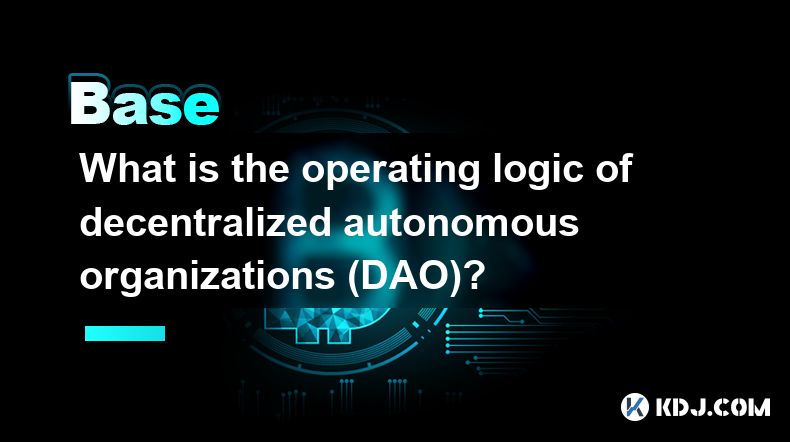
Understanding the Inner Workings of Decentralized Autonomous Organizations (DAOs)
Decentralized Autonomous Organizations (DAOs) represent a novel organizational structure leveraging blockchain technology to operate autonomously. Unlike traditional organizations with centralized control, DAOs function through a distributed network of participants governed by pre-defined rules encoded in smart contracts. These smart contracts, residing on a blockchain, automatically execute agreed-upon actions based on predefined conditions. This eliminates the need for intermediaries and central authorities, fostering transparency and immutability.
The core of a DAO's operation lies within its smart contracts. These self-executing contracts define the DAO's rules, membership criteria, voting mechanisms, and treasury management. All actions are recorded on the blockchain, creating a transparent and auditable history of the DAO's activities. This transparency is a key differentiator from traditional organizations, promoting accountability and trust among participants.
Membership in a DAO typically involves acquiring governance tokens. These tokens grant holders voting rights on proposals affecting the DAO's direction. The voting process is often weighted based on the number of tokens held, though various voting mechanisms exist, including quadratic voting, which aims to mitigate the influence of large token holders. The outcome of votes directly impacts the DAO's actions, as the smart contracts automatically execute the decisions made by the community.
Funding for DAO operations is typically managed through a treasury held in cryptocurrency. Members can propose projects or initiatives requiring funding, and the community votes on their allocation. Successful proposals receive funding from the DAO's treasury, automatically disbursed according to the smart contract's instructions. This decentralized treasury management system ensures fair and transparent allocation of resources.
The governance model of a DAO is crucial to its success. Different DAOs employ various governance models, ranging from simple majority voting to more complex systems incorporating weighted voting or delegated voting. The choice of governance model depends on the DAO's specific goals and the desired level of participation from its members. Choosing the right model is paramount to efficient and fair decision-making.
A significant aspect of DAO operations is the execution of proposals. Once a proposal passes a vote, the smart contract automatically executes the corresponding actions. This could involve funding a project, changing the DAO's parameters, or even deploying new smart contracts. The automation ensures that decisions are implemented efficiently and transparently, without the need for manual intervention.
Security is paramount in DAO operations. The security of the smart contracts directly impacts the security of the entire DAO. Vulnerabilities in the smart contracts could lead to exploitation and loss of funds. Rigorous auditing and security best practices are crucial to mitigate these risks and ensure the long-term stability of the DAO. Thorough audits by reputable firms are essential.
DAOs offer a unique approach to collective decision-making and resource management. They facilitate collaboration among individuals with shared interests, enabling them to collectively pursue common goals. The transparent and automated nature of their operations promotes trust and accountability, fostering a more democratic and efficient organizational structure.
The scalability of a DAO is a significant factor in its long-term viability. As a DAO grows, its operational complexity can increase, potentially hindering its efficiency. Effective scalability strategies are needed to manage the increasing number of members, proposals, and transactions. Efficient governance mechanisms are crucial for scalability.
The legal implications of DAOs are still evolving. The decentralized and autonomous nature of DAOs presents challenges to traditional legal frameworks. Clarity on legal issues surrounding liability, taxation, and regulatory compliance is essential for the continued growth and adoption of DAOs. Navigating the evolving legal landscape is critical.
The future of DAOs is likely to see increased innovation and adoption. As blockchain technology matures and the legal landscape clarifies, DAOs are expected to play a more significant role in various sectors. Their decentralized and transparent nature has the potential to revolutionize how organizations operate and interact. Continuous development and innovation are key to DAO success.
Common Questions and Answers about DAO Operating Logic
Q: How are decisions made in a DAO?
A: Decisions are made through a voting process governed by smart contracts. Members typically use governance tokens to vote on proposals. The outcome of the vote automatically triggers the execution of the decision through the smart contract.
Q: What are the benefits of using a DAO structure?
A: Benefits include transparency, immutability, automation, and decentralization. These features foster trust, accountability, and efficiency, eliminating the need for intermediaries.
Q: What are the risks associated with DAOs?
A: Risks include smart contract vulnerabilities, governance challenges, regulatory uncertainty, and potential for exploitation. Thorough audits and robust governance mechanisms are crucial to mitigate these risks.
Q: How is funding managed in a DAO?
A: Funding is typically managed through a DAO treasury held in cryptocurrency. Members propose projects, and the community votes on their allocation. Successful proposals receive funding automatically disbursed by smart contracts.
Q: What are governance tokens and their role in a DAO?
A: Governance tokens grant holders voting rights on proposals affecting the DAO. The number of tokens held often determines voting weight, though different voting mechanisms exist.
Q: How does the automation aspect of DAOs work?
A: Smart contracts automatically execute decisions made through the voting process. This automation eliminates the need for manual intervention and ensures efficient implementation of decisions.
Q: What are some examples of different DAO governance models?
A: Examples include simple majority voting, weighted voting based on token holdings, quadratic voting, and delegated voting where members delegate their voting rights to representatives.
Q: What is the role of smart contracts in DAO operations?
A: Smart contracts are the backbone of DAOs, encoding the rules, governing the voting process, managing the treasury, and automatically executing decisions. Their security is paramount.
Q: How can I participate in a DAO?
A: Participation typically involves acquiring governance tokens. The specific process varies depending on the DAO. Some DAOs may have membership requirements or onboarding processes.
Q: What is the future outlook for DAOs?
A: The future of DAOs is promising, with potential for wider adoption and innovation across various sectors. However, challenges remain regarding legal clarity, scalability, and security.
Disclaimer:info@kdj.com
The information provided is not trading advice. kdj.com does not assume any responsibility for any investments made based on the information provided in this article. Cryptocurrencies are highly volatile and it is highly recommended that you invest with caution after thorough research!
If you believe that the content used on this website infringes your copyright, please contact us immediately (info@kdj.com) and we will delete it promptly.
- Bitcoin (BTC) price falls four per cent after Donald Trump imposes tariffs on trading partners worldwide
- 2025-04-03 14:25:13
- Ethereum Price Fails to Maintain Gains
- 2025-04-03 14:25:13
- Justin Sun, Founder of Tron, Steps in to Rescue TrueUSD (TUSD) from a $456M Reserve Crisis
- 2025-04-03 14:20:12
- Meme Coins Are Exploding, Here's Why They're So Appealing
- 2025-04-03 14:20:12
- Qubetics ($TICS): The Best 100x Crypto for Real Utility and ROI
- 2025-04-03 14:15:12
- Ethereum Faces Tough Market Conditions
- 2025-04-03 14:15:12
Related knowledge
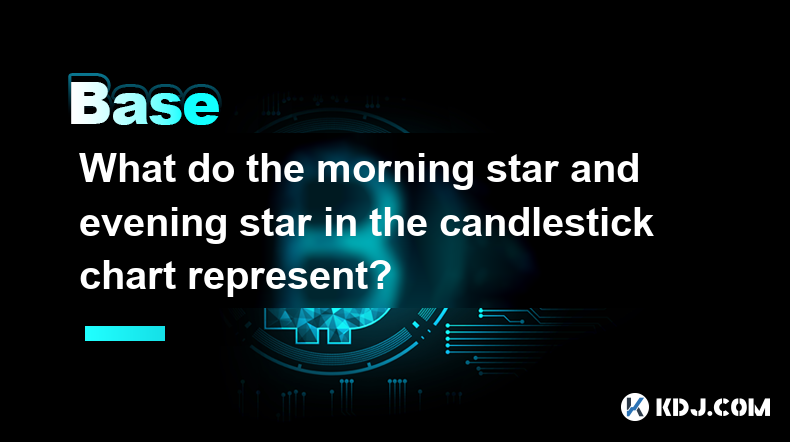
What do the morning and dusk stars in the candlestick chart represent?
Apr 03,2025 at 03:11pm
In cryptocurrency trading, the K-line chart is an important tool for analyzing market trends and price movements. Among them, 'Morning Star' and 'Evening Star' are two important reversal patterns, which represent the key signals of the market's shift from a bear market to a bull market and from a bull market to a bear market, respect...
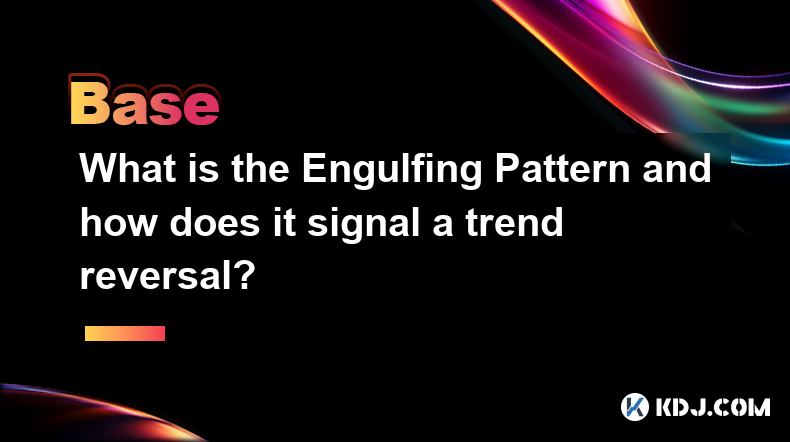
What is the swallowing form? How does it predict a trend reversal?
Apr 03,2025 at 03:07pm
In cryptocurrency trading, technical analysis is one of the important tools traders use to predict market trends and make trading decisions. Among them, the Engulfing Pattern is a common K-line pattern. When it appears on the chart, it is usually considered a signal of a trend reversal. This article will explore in detail what the engulfing pattern is a...
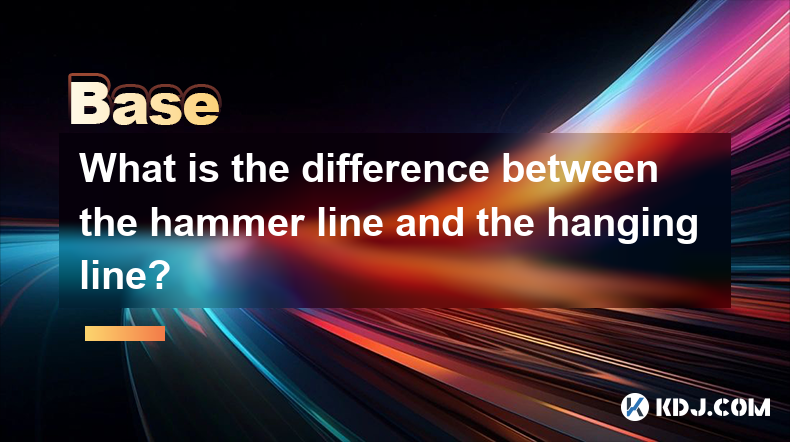
What is the difference between the hammer line and the hanging line?
Apr 03,2025 at 03:03pm
The hammer line and the 'hanging line' pattern are common K-line patterns in technical analysis. They are very similar in appearance, but there are significant differences in the market environment and the predicted market trend. This article will explore the differences between these two forms in detail and help readers better understand and use them f...
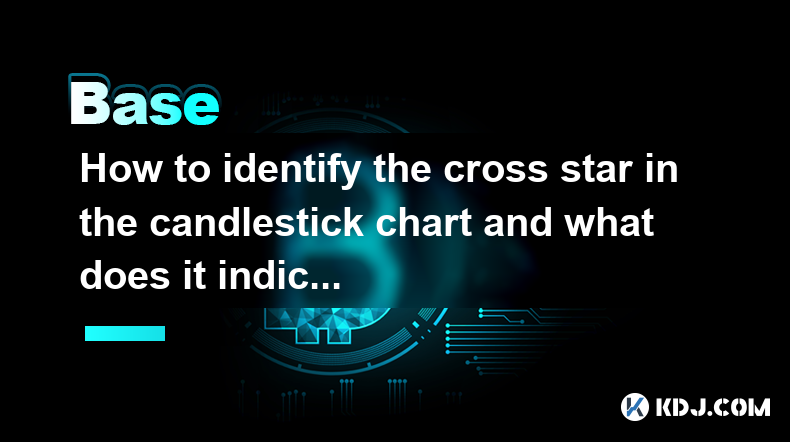
How to identify the cross star in the candle chart and what does it mean?
Apr 03,2025 at 02:57pm
In cryptocurrency trading, the K-line chart is one of the important tools to analyze market trends and price movements. Among them, 'Cross Star' is a common K-line pattern, which is of great significance in analyzing market sentiment and predicting price trends. This article will introduce in detail how to identify the 'cross star' in th...
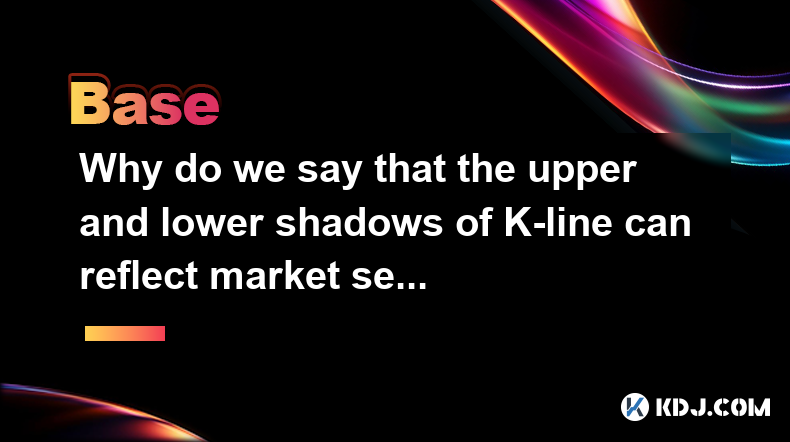
Why do the upper and lower shadows of the K-line reflect market sentiment?
Apr 03,2025 at 02:53pm
The K-line chart is one of the most commonly used tools in technical analysis, and the upper and lower shadows can intuitively reflect the market's long and short emotions and the psychological state of traders. By carefully observing and analyzing the upper and lower shadows of the K-line, investors can better understand market dynamics and make sm...

What are positive and negative lines? What is the difference between them?
Apr 03,2025 at 02:47pm
In the cryptocurrency market, the K-line chart is a commonly used technical analysis tool to show price changes. Each 'candle' in the K-line chart represents the price trend over a period of time, among which 'yang line' and 'yin line' are two key concepts. Understanding them is essential to analyzing market trends and making trading decisions. What is ...

What do the morning and dusk stars in the candlestick chart represent?
Apr 03,2025 at 03:11pm
In cryptocurrency trading, the K-line chart is an important tool for analyzing market trends and price movements. Among them, 'Morning Star' and 'Evening Star' are two important reversal patterns, which represent the key signals of the market's shift from a bear market to a bull market and from a bull market to a bear market, respect...

What is the swallowing form? How does it predict a trend reversal?
Apr 03,2025 at 03:07pm
In cryptocurrency trading, technical analysis is one of the important tools traders use to predict market trends and make trading decisions. Among them, the Engulfing Pattern is a common K-line pattern. When it appears on the chart, it is usually considered a signal of a trend reversal. This article will explore in detail what the engulfing pattern is a...

What is the difference between the hammer line and the hanging line?
Apr 03,2025 at 03:03pm
The hammer line and the 'hanging line' pattern are common K-line patterns in technical analysis. They are very similar in appearance, but there are significant differences in the market environment and the predicted market trend. This article will explore the differences between these two forms in detail and help readers better understand and use them f...

How to identify the cross star in the candle chart and what does it mean?
Apr 03,2025 at 02:57pm
In cryptocurrency trading, the K-line chart is one of the important tools to analyze market trends and price movements. Among them, 'Cross Star' is a common K-line pattern, which is of great significance in analyzing market sentiment and predicting price trends. This article will introduce in detail how to identify the 'cross star' in th...

Why do the upper and lower shadows of the K-line reflect market sentiment?
Apr 03,2025 at 02:53pm
The K-line chart is one of the most commonly used tools in technical analysis, and the upper and lower shadows can intuitively reflect the market's long and short emotions and the psychological state of traders. By carefully observing and analyzing the upper and lower shadows of the K-line, investors can better understand market dynamics and make sm...

What are positive and negative lines? What is the difference between them?
Apr 03,2025 at 02:47pm
In the cryptocurrency market, the K-line chart is a commonly used technical analysis tool to show price changes. Each 'candle' in the K-line chart represents the price trend over a period of time, among which 'yang line' and 'yin line' are two key concepts. Understanding them is essential to analyzing market trends and making trading decisions. What is ...
See all articles























































































